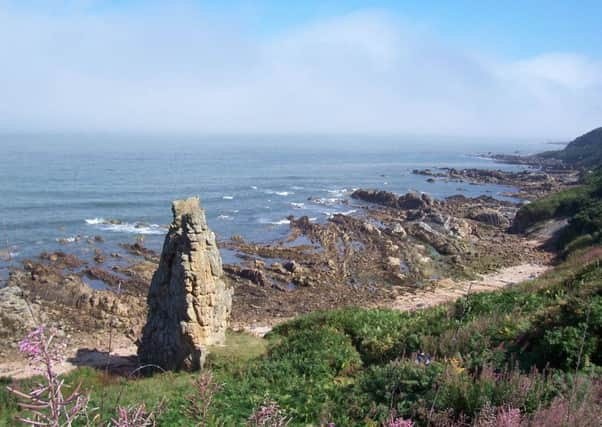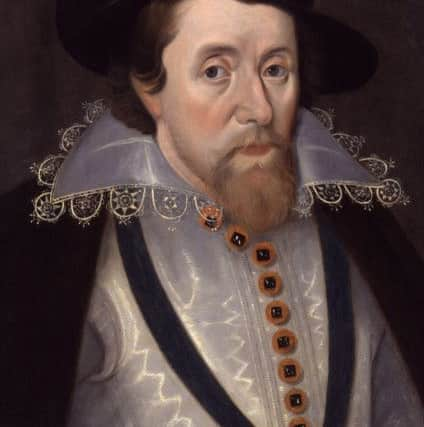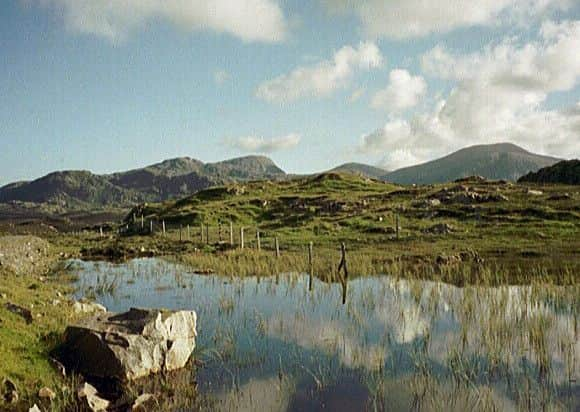The plan to colonise Lewis by the Fife Adventurers


Little were the gentry prepared for the reception they were to receive from the Macleods, who had held the island for between 300 and 400 years.
Details of the episode are recorded by the Angus Macleod Archive, set up by the family of the late Lewis man, a founder member of the Scottish Crofting Union and a passionate advocate for the history and people of his island.
Advertisement
Hide AdAdvertisement
Hide AdMacleod described a “remarkable” contract for the venture between King James VI and his syndicate of loyal followers, which was to end in a very public beheading at the Mercat Cross in Edinburgh.


The contract, held in the records of the Privy Council, bound the men ‘to plant policy and civilisation in the hitherto most barren Isle of Lewis, and to develop the extraordinary rich resources of the same for the public good and the Kings profit’.
The signatories were Patrick of Lindores, James Learmonth of Balcomie, Sir James Anstruther, James Spense of Wormiston, Sir James Sandilands, Captain William Murray, John Forret of Fincask, Sir William Stewart, Sir George Home and his son David Home and Lewis Duke of Lennox, cousin of the King.
The became known as the Gentlemen’s Adventurers of Fife, or the Fife Adventurers.


The men left the mainland for Lewis towards the end of 1598 with an army of 600 mercenaries and “well-armed lowlanders” under the leadership of Lennox,
Macleod noted: “The Fife Adventurers were to discover that the primitive instinct of self-defence and bravery still flourished in
Lewis.”


The lowlanders settled in an encampment at what is now Stornoway with houses of stone, timber and turf built close to the foreshore in the area that is now South Beach Street.
Advertisement
Hide AdAdvertisement
Hide AdJames Browne, in his 1852 History of the Highlands, said the settlers made a “small but handsome town” but were “much annoyed” in their operations by Neil and Murdoch McLeod, the only sons of Roderick Macleod, chieftain of Clan Macleod of Lewes, who remained on the island.
Far from being in the need of civilising, Murdoch was a man of superior education who could draft legal documents and, as the older brother, in supreme command of island affairs, the Macleod archive said.
Nevertheless, Murdoch made clear his view of the adventurers and succeeded in apprehending Lord Balcomie, seizing his ship and killing all his men with the peer detained for six months.


In the aftermath of the Balcomie attack, Neil Macleod launched an offensive against the adventurers with 200 barbarous ‘bluidie and wiket Heilandmen’ (bloody and wicked Highland men) armed with bows and arrows, two handed swords, pistols and other weapons.
More than 20 of the colonists were killed with property valued at 20,000 merks destroyed and horses, cows, oxen, sheep and other goods, seized.
The brothers loyalties then became dangerously split, with Neil taking Murdoch prisoner amid an ongoing power struggle.
Neil agreed to give up his brother Murdoch to the adventurers in return for a pardon for all his past offences.
Advertisement
Hide AdAdvertisement
Hide AdHis new found allegiance with the Fife men was to quickly sour and, after returning to Lewis from Edinburgh, Neil attacked the men “furiously” through the night, killing 60 of them.
Macleod wrote: “Murdoch Macleod fled from Lewis but Neil remained in Lewis with the object of conducting guerrilla warfare against the colonists.”
From a small island off the west coat of Lewis, Neil kept the pressure on the Fife Adventurers for the next few years and continued to hamper the King’s plan to take Lewis.
Amid the unrest and the failing will of the nobles, Kenneth MacKenzie of Kintail started to further his plans to take the island.
Browne wrote: “As all of them had declined in their circumstances in this luckless speculation, and as they were continually annoyed by Neil Macleod, the finally abandoned the island and returned to Fife to bewail their loss.”
The Island of Lewis was given to Kenneth Mackenzie of Kintail by Crown Charter in return for the extract timber and iron ore from Mackenzie lands at Letterewe in Ross-shire.
The Mackenzies were given free hand to “slaughter, mutilate and fire raise” in their mission to hunt down Macleod, who ultimately surrendered on the tiny island of Beresay.
He was marched to Edinburgh, tried and beheaded at the Mercat Cross Edinburgh in March 1613. His head was put on a spike and all his land and property reverted to the Crown.
